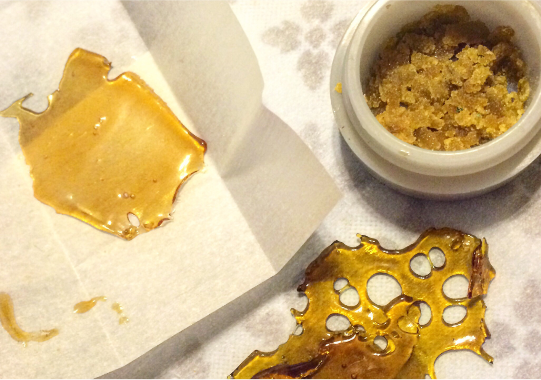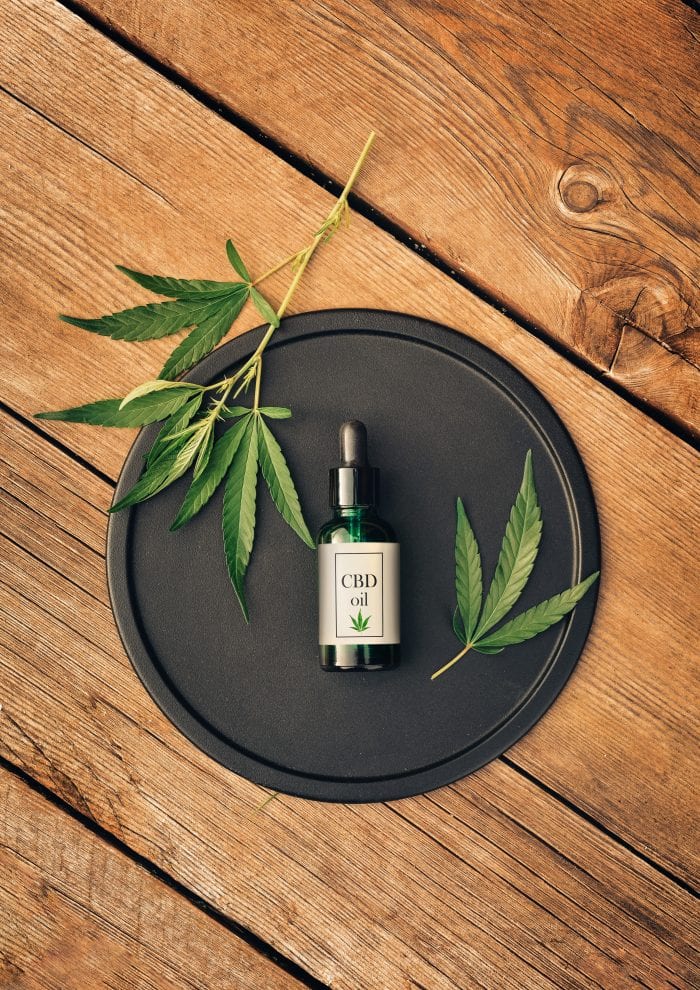Have you ever made a simply syrup in the kitchen? Or how about watched a chef make a reduction during a cooking competition? Creating concentrates from cannabis products is essentially the same thing – distilling down, or decreasing dilution to eliminate as much plant waste as possible. It becomes a purer product and changes how much you need to achieve the state you want.
“Hey guys, Cabin just got a new shatter in. Who’s trying some with me?”
“Those terps small amazing, and I bet they taste amazing too!”
Concentrates are made in one of two ways: physically separating the trichome from the plant, also referred to as a mechanical separation, or using liquid solvents, which is sometimes referred to as a chemical extraction. Concentrates made using liquid solvents creates products such as terpenes, shatter, oils and tinctures. Concentrates made without the use of solvents uses for instead, creating products like rosin, dry sift, and kief are all examples of concentrates made without the use of solvents.
Physical, or mechanical, separation, involves breaking and removing trichomes from plant material through force. Like making lemon juice by squeezing lemons. Though, not all physical separations are the wet and sticky kind. You can also dry sift which involves shaking cannabis through a series of screens to make sure nothing but trichome glands make it into the final product.
Chemical extractions, or solvent-based extractions, make use of chemical solvents to dissolve the trichomes from the plant. Solvent-based extractions are the most efficient methods and are the preferred method for the commercial cannabis industry. The main solvents employed are butane, propane, ethanol, and carbon dioxide.

Much like their dry, non-processed counterparts, longevity and potency of your product depends on how you store it. Unlike flower, which will generally always exist in similar states, concentrates come in all shapes, sizes and consistencies. That’s why you’ll see a wide range of product packaging. Glass jars ideal for softer materials like budder and sauce. Silicone jars provide easy access and removal for virtually any concentrate consistency, but they don’t usually offer an airtight seal that is good enough for long-term storage. Parchment paper is another short-term storage solution used for solvent-based extracts.
Concentrates can be made from any part of the plant, which can be dried and cured or fresh. The three most common cannabis concentrate labels include trim-run, nug-run and live resin.
Trim is the excess leaves removed from cannabis buds to make the end product more attractive to consumers and create a less harsh smoke. This part of the plant generally contains fewer trichomes than cannabis buds, but accumulating the trichomes from trim makes use out of the cannabinoids and terpenes that were once discarded.
Nugs are high-quality cannabis buds that are also known as flowers. A nug run is a batch of concentrates extracted from dried and cured nugs. This type of concentrate uses the most trichome-rich part of the cannabis plant to produce one of the most flavorful and potent concentrates possible. The textures produced can range from shatter to sauce.
Live resin is a term used to describe a concentrate made from fresh cannabis plant material that was not dried or cured. This method is used to retain the most temperature sensitive terpenes that are lost during the drying and curing process. Products that have been extracted using live resin process — freezing freshly harvested cannabis plant material and extracting it — have been associated as high-grade and flavorful concentrates due to the high amounts of terpenes.
